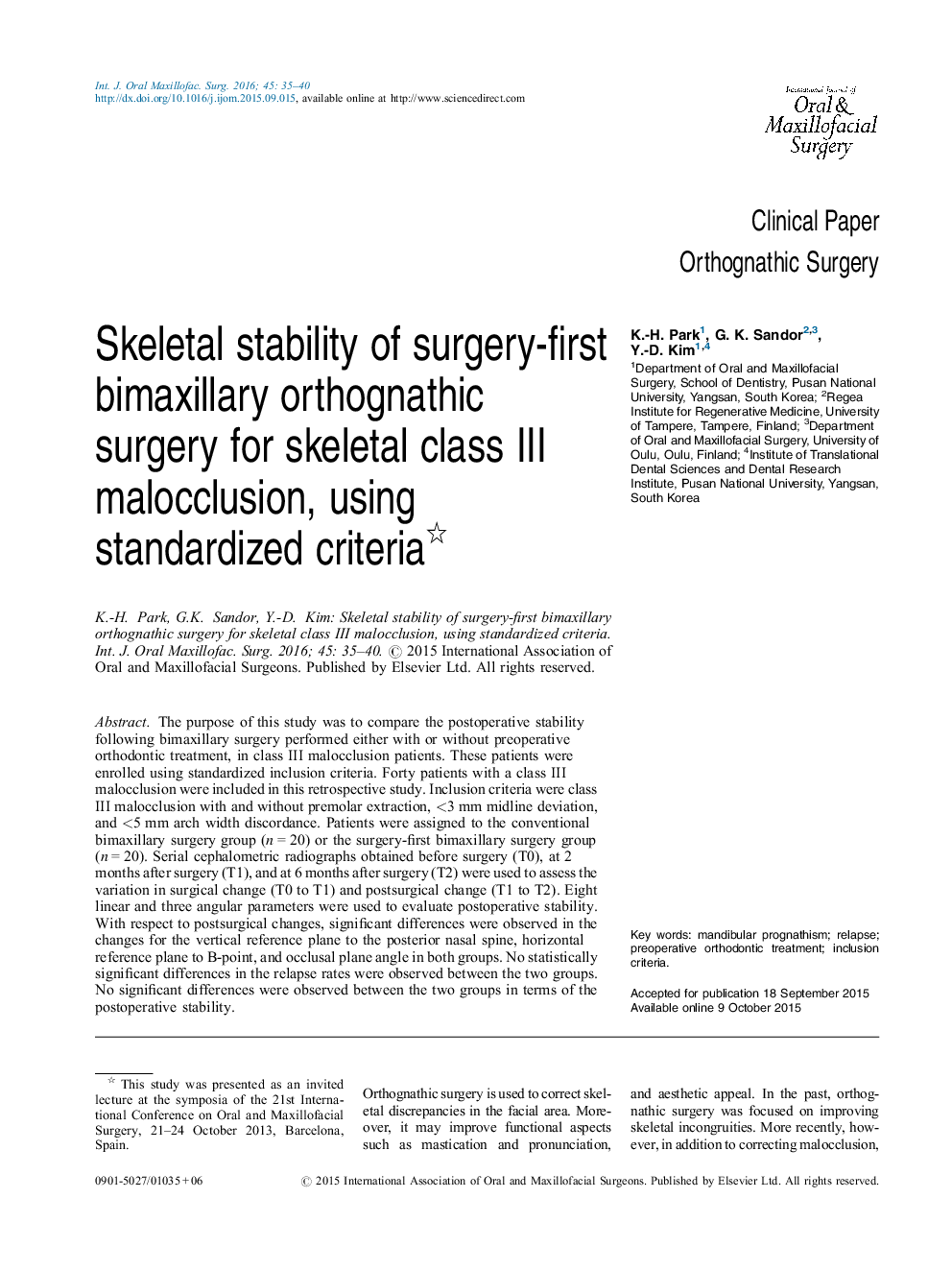| Article ID | Journal | Published Year | Pages | File Type |
|---|---|---|---|---|
| 3131954 | International Journal of Oral and Maxillofacial Surgery | 2016 | 6 Pages |
The purpose of this study was to compare the postoperative stability following bimaxillary surgery performed either with or without preoperative orthodontic treatment, in class III malocclusion patients. These patients were enrolled using standardized inclusion criteria. Forty patients with a class III malocclusion were included in this retrospective study. Inclusion criteria were class III malocclusion with and without premolar extraction, <3 mm midline deviation, and <5 mm arch width discordance. Patients were assigned to the conventional bimaxillary surgery group (n = 20) or the surgery-first bimaxillary surgery group (n = 20). Serial cephalometric radiographs obtained before surgery (T0), at 2 months after surgery (T1), and at 6 months after surgery (T2) were used to assess the variation in surgical change (T0 to T1) and postsurgical change (T1 to T2). Eight linear and three angular parameters were used to evaluate postoperative stability. With respect to postsurgical changes, significant differences were observed in the changes for the vertical reference plane to the posterior nasal spine, horizontal reference plane to B-point, and occlusal plane angle in both groups. No statistically significant differences in the relapse rates were observed between the two groups. No significant differences were observed between the two groups in terms of the postoperative stability.
